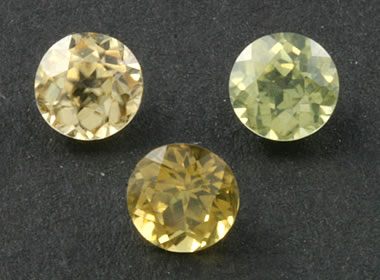
chrysoberyl [kris-uh-ber-uh l] ExamplesWord Origin noun
- a mineral, beryllium aluminate, BeAl2O4, occurring in green or yellow crystals, sometimes used as a gem.
Origin of chrysoberyl 1350–1400; Middle English Latin chrȳsoberyllus Greek chrȳsobḗryllos, equivalent to chrȳso- chryso- + bḗryllos beryl Also called cymophane. Examples from the Web for chrysoberyl Historical Examples of chrysoberyl
Some of these approach the chrysoberyl and topaz in hardness and hue.
Lippincott’s Magazine of Popular Literature and Science
Various
Chrysoberyl, kris′o-ber-il, n. a mineral of various shades of greenish-yellow or gold colour.
Chambers’s Twentieth Century Dictionary (part 1 of 4: A-D)
Various
Another important variety is that of the chrysoberyl called “cymophane.”
The Chemistry, Properties and Tests of Precious Stones
John Mastin
Chrysoberyl (alexandrite and also the greenish-yellow chrysoberyl).
A Text-Book of Precious Stones for Jewelers and the Gem-Loving Public
Frank Bertram Wade
Passing on to the next mineral in the scale of hardness we come to chrysoberyl, which is rated as 81⁄2 on Mohs’s scale.
A Text-Book of Precious Stones for Jewelers and the Gem-Loving Public
Frank Bertram Wade
British Dictionary definitions for chrysoberyl chrysoberyl noun
- a rare very hard greenish-yellow mineral consisting of beryllium aluminate in orthorhombic crystalline form and occurring in coarse granite: used as a gemstone in the form of cat’s eye and alexandrite. Formula: BeAl 2 O 4
 Liberal Dictionary English Dictionary
Liberal Dictionary English Dictionary